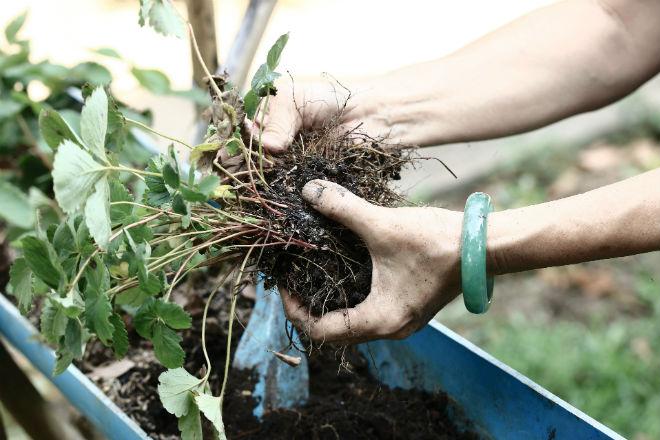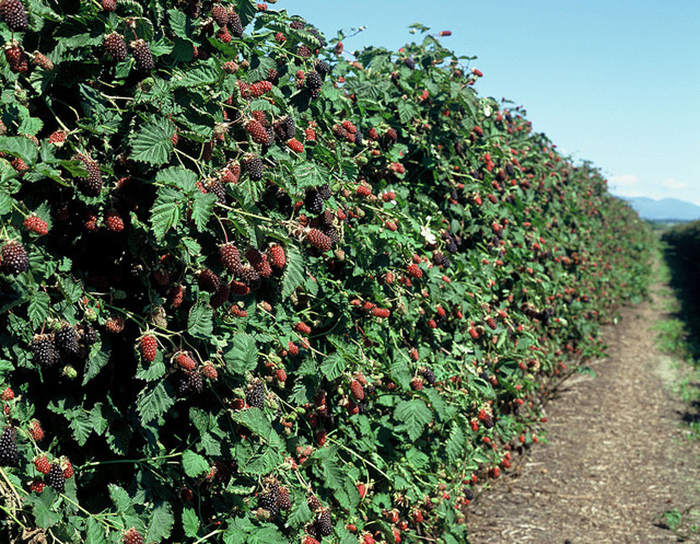Content:
Strawberry growing season
Distinguish between early, mid and late ripening strawberry varieties.
The time from sowing to harvesting differs for them, but the entire growing season is conditionally divided into several phases:
1) The beginning of growth and development begins in the spring, when the air temperature is set at around 5-7 degrees Celsius and gradually increases. The growth of the plant during this period occurs due to the nutrients accumulated in the stems and leaves. After 10-20 days, after the establishment of warm weather, usually in March-April, flower stalks begin to form. They actively form within one to two weeks. After the growth of leaves, flowering begins.
2) Strawberry flowering begins 10-15 days after the appearance of the peduncle. Usually one flower blooms for 5-7 days. Depending on the variety and weather conditions, the plant can bloom from 8 to 30 days or more. The duration of the flowering period depends on many conditions: soil condition, air humidity, weather conditions, the presence of diseases and pathologies in plants. The last flowers to appear are usually sterile and do not produce fruit.
3) After the end of flowering, ripening begins. Ripening and flowering can often take place at the same time. Ripening lasts 30-40 days.
4) At the end of maturation, increased growth of leaves and whiskers begins again. With a lack of moisture, the plant stops developing a mustache. Under normal conditions, new whiskers will stop forming in July, but whiskers will continue to grow throughout the growing season.
The shoots grown by strawberry bushes are necessary for the plant to propagate. It is necessary to select shoots from a young healthy bush. Peduncles are removed from each individual bush throughout the summer, as it grows. This allows the remaining mustache to develop and grow. If the strawberry bush grows well, receiving all the necessary vitamins and minerals, subject to the required temperature and humidity, then leaves will appear on the tips of the whiskers in 3-4 weeks. These are young strawberry bushes. Those shoots with 4 or more leaves are suitable as seedlings.
There is another way to grow strawberries - by dividing the bush. In order to propagate the strawberry bush, it is dug up and carefully divided into several parts. The root system divides easily into several small roots.
The most unpopular and troublesome method is seed reproduction. Many gardeners are against planting strawberry seeds. But when planting this method, the seedlings are of high quality and healthy.
How to properly propagate strawberries
In order to grow tasty and sweet strawberries, you need to know how strawberries multiply and follow the planting and growing technology. Every 3-4 years, even the most elite varieties of strawberries age, wither and are no longer capable of producing a rich harvest. In order for the amount of the crop not to fall, the plantings must be renewed. Strawberries reproduce quite easily. There are even several methods.
Strawberry mustache propagation in August
Propagation of strawberries with a mustache in August is the easiest and most optimal method that requires a minimum of labor.When propagated by this method, new bushes retain the properties of their "donor".
The main rule for any new strawberry bush is shoot removal. In the first year of development of a strawberry bush, all lateral shoots are removed from it. This is necessary in order to see and evaluate the yield of each bush. This method determines which bush to choose as a "donor" for the next year. In the second year, on the contrary, all peduncles are removed from the selected bushes, and only lateral shoots are left.
Propagation of strawberries with a whisker in summer is a very popular method because the best shoots begin to form in August. They can develop not one, but two or three new sockets. Better and more fertile will be those that are located closer to the bush. Therefore, at a distance of 5-7 cm from the bush, the mustache is cut. Then the plant forms high-quality 3-5 rosettes near the stem, and does not waste energy on the growth of the shoot. It is necessary to remove the forming peduncles in time so that the plant does not waste energy on the development of unnecessary flowers.
When roots begin to form on the outlets, you need to attach them to the ground. The root is fixed on the soil with wire, sprinkled with damp earth and fertilized with humus.
The future bush is watered every 2-3 days. If the weather is hot, you need to irrigate the plant more often so that the soil under it is always moist. The soil should be loose, for better oxygen access to young roots.
After 6-8 weeks, new bushes are ready for transplantation and independent development. By this time, 3-5 true leaves should have formed on it. For the procedure, choose a dry and sunny day in late summer, early autumn. A transplant is best done in the early morning or late evening.
The rosettes are separated from the "mother" plant and transferred to a new location. In order for the plant to begin to adapt in advance to independent development, it is recommended to cut the mustache a few days before transplanting.
In order for a new bush to take root faster, the soil must be prepared before planting.
The transplant soil should be light but nutritious. Humus and superphosphate are added to the soil. For 2-3 days the bed is sprinkled with fine sand and loosened. This procedure protects strawberries from pests. It is useful to fertilize the soil with special fertilizers for berries, for example, Agricola, Zdravn or Rubin.
To protect young strawberry bushes from strong winds and heavy rains, gardeners use a special material - agrofibre. Its second name is spunbond. Its textile structure prevents plant damage.
Propagation of strawberries in August by dividing the bush
Not all varieties will sprout. For example, some hybrids, such as Snow White or Raymond, are not genetically adapted to produce a mustache. For such strawberries, there is a method of reproduction by dividing the bush.
The advantage of this method is that the harvest and seedlings can be obtained in one year. This method is relevant for remontant strawberry varieties, because the plant can bloom and bear fruit for a long time.
How to properly propagate strawberries by dividing a bush? In order to breed high-quality plants on the site, only healthy strawberry bushes are selected, without diseases and pests. The optimal age of a bush suitable as seedlings is 2-3 years.
One bush can be divided into 5-10 new shoots. Necessarily on each sprout there should be several roots and 3-4 true leaves.
The procedure is best done in early August. A newcomer takes root in a new place rather quickly, as a rule, by mid-September. It is not worth waiting for a bountiful harvest in a year, but after two years the plant will reach the peak of its fruiting.
The procedure itself is step by step:
- The selected bush is carefully dug out of the ground so as not to damage the roots.
- The dug out plant is placed in water at room temperature. Potassium permanganate is added to the water for disinfection.
- When the plant is soaked, the earth settles from the roots, the bush begins to divide. It is better to do it with your hands, without using sharp objects (knives or scissors), so that the roots are not damaged.
- The roots are dried. For the prevention of diseases, the roots are sprinkled with activated carbon or ash.
- New bushes are transplanted to the selected location.
How to root a mustache without roots
Many people have the question of how to propagate strawberries if the strawberry bed is covered with a layer of covering material, and the mustache cannot take root. In this case, the shoots are cut and placed in water. The water should be at room temperature. Root system growth stimulants are added to it. Kornevin, Zircon, succinic acid are known agents that can root a sprout. The soaked sprouts are planted in light, loose soil to a depth of 2-3 cm. As the soil dries, moisten the soil. With the right amount of moisture and nutrients, the root system will be formed by the end of the season.
Rooting a mustache by Epin
A popular rooting agent called Epin. Before planting strawberry sprouts in the soil, it is recommended to soak them for 4-5 hours in a solution of this substance. To obtain the required mixture, 1 ml of a 0.05% solution of the substance is added to 2 liters of water. This procedure will stimulate the growth of the root system. Epin helps to root the young bush.
How to grow a strawberry mustache for breeding
In order for the strawberry bush to grow strong and hardy shoots suitable for growing a new fertile bush, it is necessary to remove all flower stalks. For the active growth of the whiskers, the plant needs to create comfortable conditions: the temperature is above 15 degrees Celsius and 12 hours of daylight hours. Otherwise, the plant itself will throw all its strength into the growth of the shoot. Plants have no problem with shoot growth. On the contrary, many strawberry varieties form a large number of shoots: from 7 to 12 pcs.
Whether to propagate strawberries by dividing an old bush
Strawberries not only can, but also need to be diluted by division. First, not all strawberry varieties can produce shoots. Secondly, the division of the bush can be done after harvesting the fruit. Thus, you can get both the harvest and new bushes. Thirdly, the survival rate is about 90% when seated by division. Fourthly, the harvest from such bushes can be harvested as early as next year. And fifthly, this is the fastest way to get a large amount of seed, because up to 15 new bushes are obtained from one old bush.



















